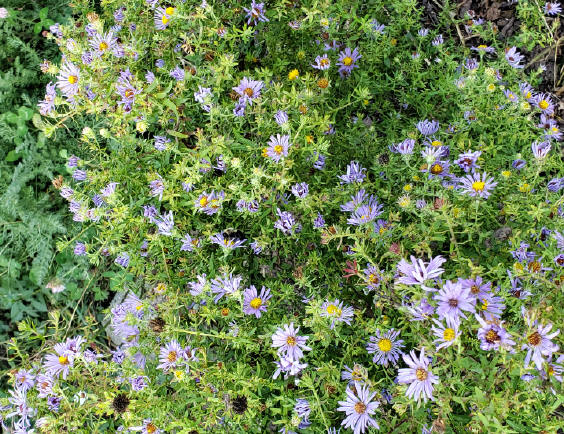Fall is the best time to evaluate this year’s garden to determine what we liked and enjoyed the most; and what areas need some additional thought before next year. This would include all types of gardens: floral, vegetable, herb, rain, etc. One must think about the time he or she has available to actually work in the garden and the possibility of
down-sizing or increasing the size of your garden. Many factors come into play – your work schedule, family commitments, your age and health, the physical soil and type of garden space you have. Many of us decide to eliminate a bed or two as we age, to accommodate our available time and physical stamina.
A relatively easy garden to maintain is the bulb garden. The advantage to a bulb garden is that once planted, many bulbs can survive and thrive over many years with little attention. When we purchased our house, there were many narcissuses (daffodils) in the beds, and common snowdrop (Galanthus nivalis). The daffodils have been replaced, but the
snowdrops remain.
Once the spring flowering bulbs are planted in the fall, you can look forward to increasing beauty from year to year, with minimal maintenance. As I walk around our gardens in early spring, I carry a bucket of bone meal or bulb fertilizer with me and sprinkle a handful on each clump of emerging bulb plant leaves. After the flowers are finished with
their colorful display, I remove the flower stems and put them in the compost pile. It is very important that you not remove the leaf growth of the plants. The dying leaves feed their bulbs and provide energy for next spring’s display. I have seen people wrap the leaves with rubber bands, so they are not splayed all over the garden soil, but this is not as good for the
bulbs as just letting them wilt down and die off. If the dead leaves bother you, just plant something in front of the bulb plant to hide the browning leaves from view. They will be gone by the end of May.
The other bulb that came with our house is muscari - grape hyacinth (M. botryoides). They have survived and spread. They are about 6 to 8 inches tall, flowers look like little bunches of grapes and work wonderfully under early flowering shrubs and trees like magnolias and flowering crab apple. There are also white flowering muscari, not quite as
well known. A very early bulb is winter aconite (eranthis), which is always the first to bloom in our garden, often pushing up through snow. Mine are 3 to 4" tall, so under a big snow, they are not visible until it melts. These have beautiful yellow flowers and naturalize vigorously.
Many gardeners love crocus (Crocus vernus) a Dutch hybrid, for their early bloom. Native to the Mediterranean region, crocus is great planted beneath short stemmed tulips. Be sure to select an early blooming tulip, like kaufmanniana, usually the first tulip to bloom in spring. These tulips are about 6 inches tall, look best when planted in large
groupings, and are excellent in rock gardens.
Tulips are divided into 15 different classes, with a wide range of bloom times, and colors and patterns, single, double, and fringed. The only issue I have found with the large long-stemmed tulips is that height and bloom size decreases each year. In the public gardens, tulip bulbs are pulled out after flowering and new bulbs are planted each fall.
Another plant family that can be added to your garden is fall blooming aster (Symphyotrichum). In a trial at the Chicago Botanic Garden, several American native species of aster were found to perform very well. The favorite there was aromatic aster (Symphotrichum oblongifolium) with its blue flowers on stiff 1 to 3-foot stems blooming in October.
Two cultivars were mentioned ‘October Skies’ which is about 18 inches high, and ‘Raydon’s Favorite’, which is a billowy mounding perennial that can reach 3 feet in height.

Aster ‘October Skies’ – Symphyotrichum oblongifolium
Asters provide an important late fall supply of nectar for pollinators. New England aster and its cultivars have the greater range of colors, from purple to pink to white. This aster is more prone to powdery mildew than aromatic aster. A low growing heath aster (Symphyotrichum ericoides) sets a beautiful carpet of white flowers in October, which
can cover the soil, or cascade over a wall. Most asters require full sun and do well in most soils.
Planting bulbs in the fall will bring a splash of color to your garden as spring arrives. Fall-blooming plants add interest and color to your gardens until Old Man Winter arrives.
Read other fall related gardening articles